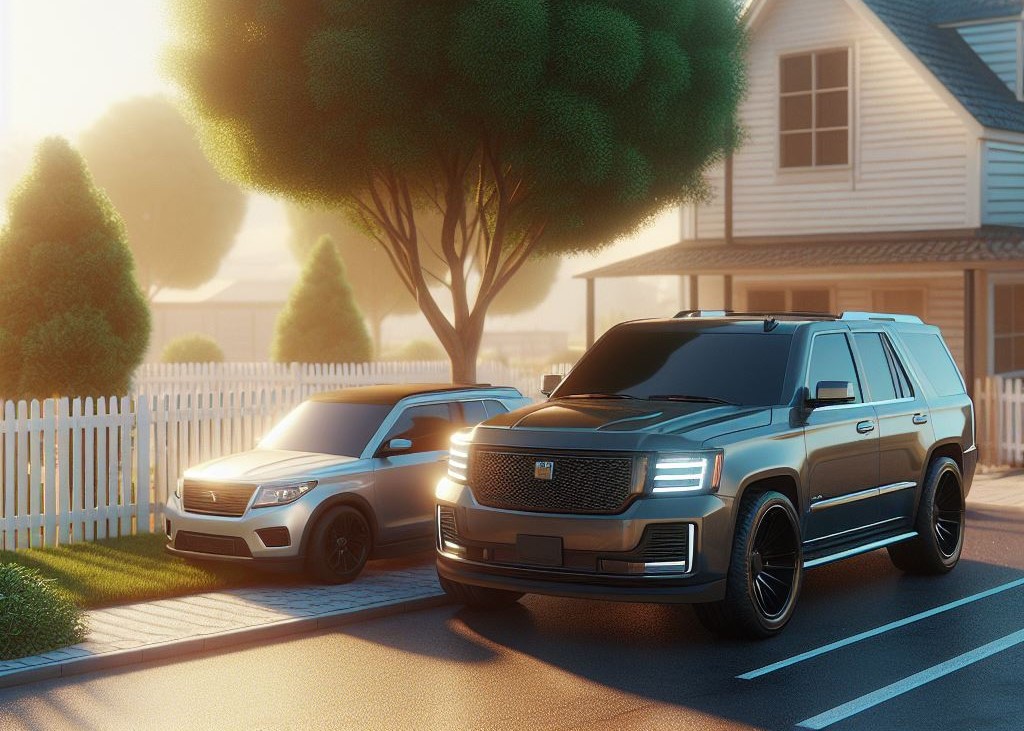GadgetWheels
Downgrading your car? Consider this…
If you’re looking at trading in a large family car for a smaller one, make sure you have all the facts.
Share
- Click to share on Twitter (Opens in new window)
- Click to share on Facebook (Opens in new window)
- Click to share on LinkedIn (Opens in new window)
- Click to email a link to a friend (Opens in new window)
- Click to share on Reddit (Opens in new window)
- Click to share on WhatsApp (Opens in new window)
- Click to share on Pinterest (Opens in new window)
With the cost of living increasing dramatically over the last few years and inflation reaching historical highs, saving money is a priority for many households. If you’re looking to save money by trading in your large family car for a smaller one, there are a few key points to consider before making the move.
“Firstly, assess your needs – think about your typical passengers, cargo requirements, and intended use,” says Barend Smit, marketing director of MotorHappy, a supplier of motor management solutions.
“A smaller car might mean sacrificing space, so ensure it accommodates your daily necessities without compromising comfort.”
Fuel efficiency is important, but don’t overlook safety features. Ensure the smaller car maintains crucial safety elements to protect you and your passengers. Finally, also consider parking and manoeuvrability in urban areas, as well as resale value and overall cost.
“Downsizing should ideally offer both immediate savings and long-term value,” says Smit.
In most cases, petrol is a car’s highest running cost, so fuel efficiency should play a major role in choosing your new car. Furthermore, with the current advances in automotive hybrid and electric technologies, consider downsizing to a PHEV (plug-in hybrid electric vehicle) or EV – it may save a lot of money in fuel in the long run.
Smit points out that, after fuel costs, maintenance is the second biggest cost of ownership.
“Premium car brands generally come with higher maintenance costs both in parts and labour. Car models with low sale numbers generally require longer waiting times to source parts and could have higher labour costs for replacement and repairs. Choosing a commonly available car model usually translates into reduced long-term ownership costs.”
Before investing in a new car, investigate the car manufacturer’s recommendations around maintenance and services. A Service Plan or Maintenance Plan offers great value for money with easy monthly payments that allow for better budgeting.
Smit points out that a Service Plan covers recommended car services by an approved facility for a specific term or kilometres, whichever comes first. A Maintenance Plan, on the other hand, is a level up from a service plan as it includes wear and tear on items such as shock absorbers, brake pads and wiper blades.
While researching a potential new car, take some time to analyse your lifestyle needs and how they may have evolved since the last time you bought a car. If kids have moved away, do you still need a large class 3-row SUV? If you are city driving 99% of the time, does it make sense to drive an all-wheel drive or 4X4?
“Consider the actual passenger and luggage space you need. After an honest analysis, you might realise that in fact, a hatchback with a sub-2-litre engine will work just fine for your needs. This change will also translate, in some cases, to a lower insurance premium and better fuel economy.”
Another important factor to consider is whether to buy a new or previously loved car. The used car market can provide the ultimate vehicle to downsize to, featuring all the perks you need and at a great price, compared to a brand-new vehicle from a dealership.
However, Smit cautions that when it comes to trading in a financed car, be wary of the timing around trading in your vehicle. Consider trading your car when the vehicle’s value is either equal to or more than the amount you owe the bank. This is called the break-even point, usually around halfway through a 72-month loan.
Your goal is to find a car that fits your lifestyle, lowers your monthly budget and has great resale value. When downsizing your vehicle, could also mean sacrifices in car performance and comfort. As with any car purchase, it’s important to consider the implications of driving a smaller, more economical car.
Share
- Click to share on Twitter (Opens in new window)
- Click to share on Facebook (Opens in new window)
- Click to share on LinkedIn (Opens in new window)
- Click to email a link to a friend (Opens in new window)
- Click to share on Reddit (Opens in new window)
- Click to share on WhatsApp (Opens in new window)
- Click to share on Pinterest (Opens in new window)
| Thank you for Signing Up |

















